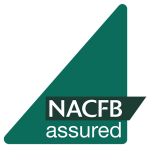By Matthew Dilks, Bridging & Commercial Specialist, Clever Lending
Since the start of the Covid pandemic, the bridging finance sector has continued its rise to prominence, with a growing number of borrowers and brokers starting to acknowledge the benefits this flexible short-term funding solution can offer those seeking to quickly raise capital.
Lack of knowledge and uncertainty around products has been one of the main barriers to the sector’s growth, but figures from Bridging Trends suggest this is changing as recent data shows that demand in the sector is at its highest level since 2019, with £716.2 million worth of loans transacted in 2022, an increase of 14% on the £626.7 million reported in 2021.
This trend looks set to continue as increased confidence in the sector coupled with affordability constraints due to rising interest rates and a lack of housing stock continues to present challenges for both residential and buy-to-let borrowers.
While it is often thought that the bridging loan market and wider specialist lending market is solely for property investors or those with a history of credit impairment, this couldn’t be further from the truth. Bridging finance is available to all types of borrowers and should form an integral part of every broker’s toolkit, especially in the current environment of rising interest rates and affordability pressure.
This is especially true for owner occupiers who are currently experiencing a subdued purchase market and delays to the homebuying process due to ongoing market volatility. In cases such as these, bridging finance could be used to prevent a chain break and ensure a house purchase goes ahead as planned with the loan being repaid at a later date when the sale of an existing property is complete.
In fact, the Bridging Trends data shows there is growing demand for this type of financing, with the number of borrowers using bridging finance for chain break purposes increasing from 18% in 2021 to 20% last year, while the overall number of regulated bridging transactions accounted for 44% of all bridging loans in 2022, up from 40.8% in 2021.
Bridging finance has also proven to be an excellent borrowing tool for property investors and BTL landlords facing a very short completion deadline, such as when buying at auction or in cases where a property is deemed to be unmortgageable because it has no kitchen or bathroom and needs extensive work to bring it up to a suitable standard.
In more complex cases, bridging loans can also be used for commercial property development purposes or in situations where an investor is converting a property into an HMO, refurbishing owner-occupied business premises or finding it difficult to secure finance because they are developing a property to change its use or purpose.
Given the short-term nature of bridging finance, most loans come with a maximum term of up to 24 months with borrowing amounts ranging between £50,000 and £10 million. All applications need to include a viable exit strategy such as selling or securing a mortgage on the property once all modifications have been made.
The element of complexity involved in the majority of bridging loan applications means knowing where to start when placing a case for the first time can be a daunting proposition for those brokers unfamiliar with the how the sector works. This is where specialist finance packagers such as Clever Lending can help.
With over 25 years’ experience and access to an extensive panel of specialist lenders, we are well versed in finding financing solutions that fit the unique circumstances of each individual client. We can guide brokers through the application process and remunerate them for both the referral and repeat business, leaving them to focus on those cases with which they are more comfortable.


